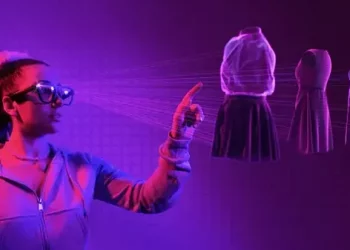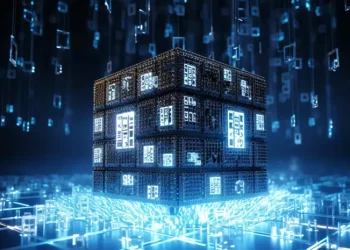The concept of the metaverse has rapidly gained traction in recent years, fueled by advancements in technology, the rise of virtual and augmented reality, and the growing popularity of decentralized platforms. As we move towards a more immersive and interconnected digital world, the term “Web 3.0” has emerged as a key component in the evolution of the internet. Web 3.0 is often linked with the metaverse, suggesting a future where digital environments are not only interconnected but also decentralized, user-controlled, and enhanced by blockchain technology. This article delves into the meaning of Metaverse Web 3.0, exploring its significance, underlying technologies, and potential impact on the future of the internet and digital interactions.
The Evolution of the Internet: From Web 1.0 to Web 3.0
To understand what Metaverse Web 3.0 represents, it is essential to first explore the evolution of the internet. The internet has undergone several significant transformations since its inception, each marked by distinct features and capabilities.
Web 1.0: The Static Web
Web 1.0, often referred to as the “static web,” was the first phase of the internet, spanning from the early 1990s to the early 2000s. During this period, websites were primarily static pages with limited interactivity. The content was created and controlled by a few entities, and users had minimal opportunities for interaction beyond basic browsing and information retrieval. Web 1.0 was characterized by:
Read-Only Content: Users could access and read content, but they had little to no ability to contribute or interact with it.
Centralized Control: The internet was controlled by a small number of content creators and organizations, leading to limited user participation.
Basic User Experience: Websites were simple, with text-based content and basic graphics, offering a rudimentary user experience.
Web 2.0: The Social Web
Web 2.0, which emerged in the mid-2000s, marked a significant shift towards a more interactive and user-centered internet. This phase introduced dynamic content, social media platforms, and user-generated content, transforming the way people interacted with the web. Web 2.0 is characterized by:
User-Generated Content: Platforms like Facebook, YouTube, and Twitter allowed users to create, share, and interact with content, leading to the rise of social media and online communities.
Interactivity and Engagement: Websites became more interactive, enabling users to comment, like, share, and participate in discussions.
Centralized Platforms: Despite the increased interactivity, control over content and data remained centralized, with tech giants like Google, Facebook, and Amazon dominating the online landscape.
Web 3.0: The Decentralized Web
Web 3.0, the next phase in the evolution of the internet, aims to address the limitations of Web 2.0 by introducing decentralization, enhanced user control, and advanced technologies such as blockchain, artificial intelligence (AI), and the Internet of Things (IoT). Web 3.0 is characterized by:
Decentralization: Unlike Web 2.0, where data and content are controlled by centralized entities, Web 3.0 emphasizes decentralization, allowing users to own and control their data and digital assets.
Blockchain Technology: Blockchain plays a crucial role in Web 3.0, enabling secure, transparent, and tamper-proof transactions and interactions. Smart contracts, decentralized applications (dApps), and cryptocurrencies are key components of this ecosystem.
Enhanced Privacy and Security: Web 3.0 offers improved privacy and security features, giving users greater control over their personal information and digital identities.
Interoperability: Web 3.0 aims to create a seamless and interconnected digital environment, where different platforms, applications, and devices can communicate and interact with one another.
The Metaverse: A New Digital Frontier
The metaverse is a concept that envisions a fully immersive, interconnected, and persistent virtual world where users can interact, socialize, work, and play in a digital environment that mirrors the physical world. The term “metaverse” was popularized by science fiction, particularly in Neal Stephenson’s 1992 novel “Snow Crash,” and has since become a buzzword in the tech industry.
Defining the Metaverse
The metaverse is not a single platform or application, but rather a collective virtual space that encompasses various digital environments, including virtual reality (VR), augmented reality (AR), online gaming, social media, and more. Key features of the metaverse include:
Immersive Experiences: The metaverse offers fully immersive experiences, often facilitated by VR and AR technologies, allowing users to interact with digital content in a three-dimensional space.
Persistent and Shared Spaces: Unlike traditional online environments, the metaverse is persistent, meaning it continues to exist and evolve even when users are not actively engaged. It is also shared, enabling multiple users to interact in real-time.
Digital Economy: The metaverse features a digital economy where users can create, buy, sell, and trade digital assets, such as virtual real estate, NFTs (non-fungible tokens), and digital goods.
Interoperability: The metaverse seeks to connect various digital environments and platforms, enabling seamless movement of assets and identities across different virtual spaces.
The Role of Blockchain in the Metaverse
Blockchain technology is a fundamental component of the metaverse, particularly in the context of Web 3.0. It provides the infrastructure for decentralized ownership, secure transactions, and digital identity management. Key aspects of blockchain in the metaverse include:
Ownership of Digital Assets: Blockchain enables true ownership of digital assets, such as NFTs, which can represent anything from virtual real estate to digital art. These assets are stored on a blockchain, ensuring their authenticity, scarcity, and transferability.
Smart Contracts: Smart contracts are self-executing contracts with the terms of the agreement directly written into code. They facilitate secure and transparent transactions in the metaverse, enabling automated and trustless interactions.
Decentralized Finance (DeFi): DeFi refers to financial services built on blockchain technology, offering decentralized alternatives to traditional banking, lending, and investing. In the metaverse, DeFi can power digital economies and enable new forms of economic interaction.
Major Players in the Metaverse
Several tech giants and startups are actively developing metaverse platforms and technologies, each contributing to the growth and evolution of this digital frontier. Some of the key players include:
Meta (formerly Facebook): Meta is one of the most prominent proponents of the metaverse, with its CEO Mark Zuckerberg envisioning a future where social interactions, work, and entertainment take place in immersive virtual environments. Meta’s investments in VR through Oculus and its development of Horizon Worlds reflect its commitment to building the metaverse.
Microsoft: Microsoft is focusing on enterprise applications of the metaverse, particularly through its Mesh platform, which enables virtual collaboration and meetings in 3D environments. Microsoft’s acquisition of game developer Activision Blizzard also signals its interest in the gaming aspect of the metaverse.
Decentraland: Decentraland is a decentralized virtual world built on the Ethereum blockchain, where users can buy, sell, and develop virtual land and assets. It is one of the most well-known examples of a blockchain-based metaverse platform.
Roblox: Roblox is a popular online gaming platform that allows users to create and share games and experiences. It has been described as a proto-metaverse, with a strong emphasis on user-generated content and social interaction.
The Sandbox: The Sandbox is another blockchain-based virtual world where users can create, own, and monetize digital assets and experiences. It has gained popularity for its focus on user empowerment and creativity.
The Convergence of Web 3.0 and the Metaverse
The concepts of Web 3.0 and the metaverse are closely intertwined, as both represent the next stage in the evolution of the internet and digital interaction. Web 3.0 provides the technological foundation for a decentralized and user-controlled metaverse, while the metaverse offers a practical application of Web 3.0 principles in the form of immersive virtual environments.
Decentralization and User Control
One of the key goals of Web 3.0 is to decentralize the internet, reducing the dominance of centralized platforms and giving users more control over their data, digital identities, and online interactions. In the context of the metaverse, this means that users can:
Own and Control Digital Assets: Thanks to blockchain technology, users can truly own digital assets, such as NFTs, virtual real estate, and digital currencies, without relying on a central authority.
Manage Digital Identities: Web 3.0 allows users to create and manage their digital identities across different platforms and environments, giving them more control over how they present themselves online.
Participate in Governance: Decentralized autonomous organizations (DAOs) are a key feature of Web 3.0, enabling users to participate in the governance and decision-making processes of metaverse platforms.
Enhanced Interoperability
Web 3.0 aims to create a more interconnected and interoperable digital ecosystem, where different platforms, applications, and devices can seamlessly communicate and interact. In the metaverse, this translates to:
Cross-Platform Experiences: Users can move freely between different virtual environments, taking their digital assets, identities, and experiences with them. This interoperability is essential for creating a cohesive and immersive metaverse.
Standardization of Protocols: Web 3.0 promotes the use of open standards and protocols, enabling different platforms to work together and share data securely. This is crucial for the development of a unified metaverse.
The Future of Digital Interaction
The convergence of Web 3.0 and the metaverse represents a significant shift in how we interact with digital content, services, and each other. The implications of this shift are vast and far-reaching, impacting various aspects of society, including:
Social Interaction: The metaverse offers new ways to connect with others, transcending physical boundaries and creating global communities. Web 3.0 ensures that these interactions are secure, private, and user-controlled.
Commerce and Economy: The metaverse is poised to become a new frontier for commerce, with digital goods, services, and experiences driving economic activity. Web 3.0 enables secure and transparent transactions, as well as decentralized marketplaces.
Education and Work: The metaverse has the potential to revolutionize education and work, offering immersive and collaborative environments for learning and productivity. Web 3.0 provides the infrastructure for secure and decentralized remote work and education platforms.
Entertainment and Creativity: The metaverse opens up new possibilities for entertainment and creative expression, allowing users to create, share, and experience content in novel ways. Web 3.0 ensures that creators retain ownership and control over their work.
See also: Who Created the Term Metaverse?
Conclusion
Metaverse Web 3.0 represents the future of the internet, where digital interaction is decentralized, immersive, and user-controlled. As the internet continues to evolve, the convergence of Web 3.0 and the metaverse will redefine how we connect, create, and experience the digital world. With blockchain technology at its core, Metaverse Web 3.0 offers a new paradigm for ownership, privacy, and interoperability, empowering users to take control of their digital lives. As we move forward, the metaverse will become an integral part of our daily lives, offering endless opportunities for innovation, collaboration, and exploration in the digital realm.
Related topics:

















